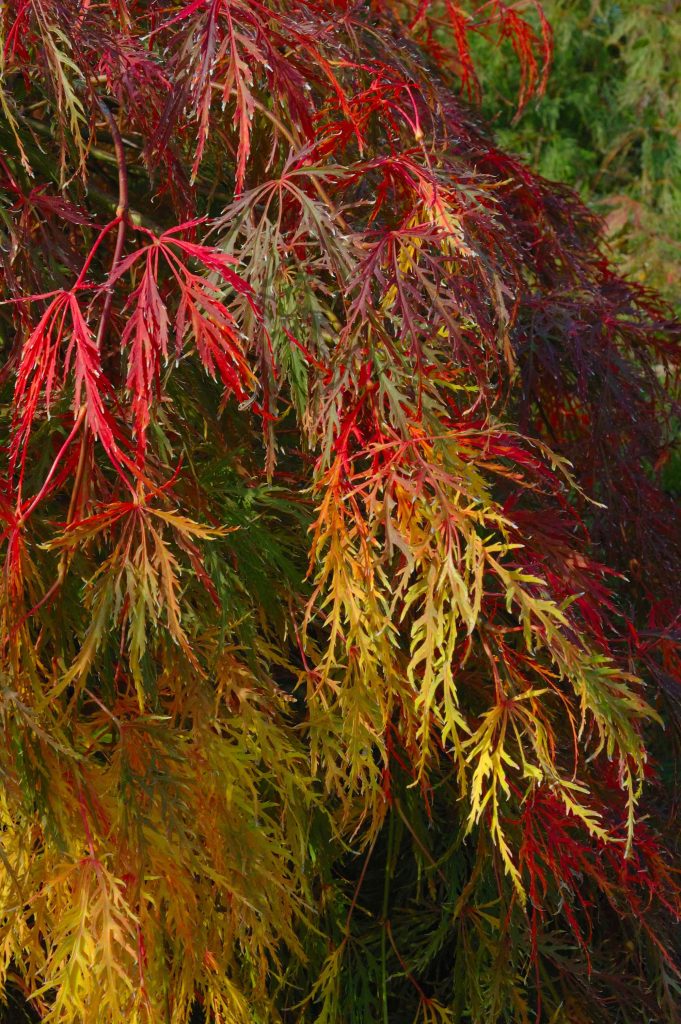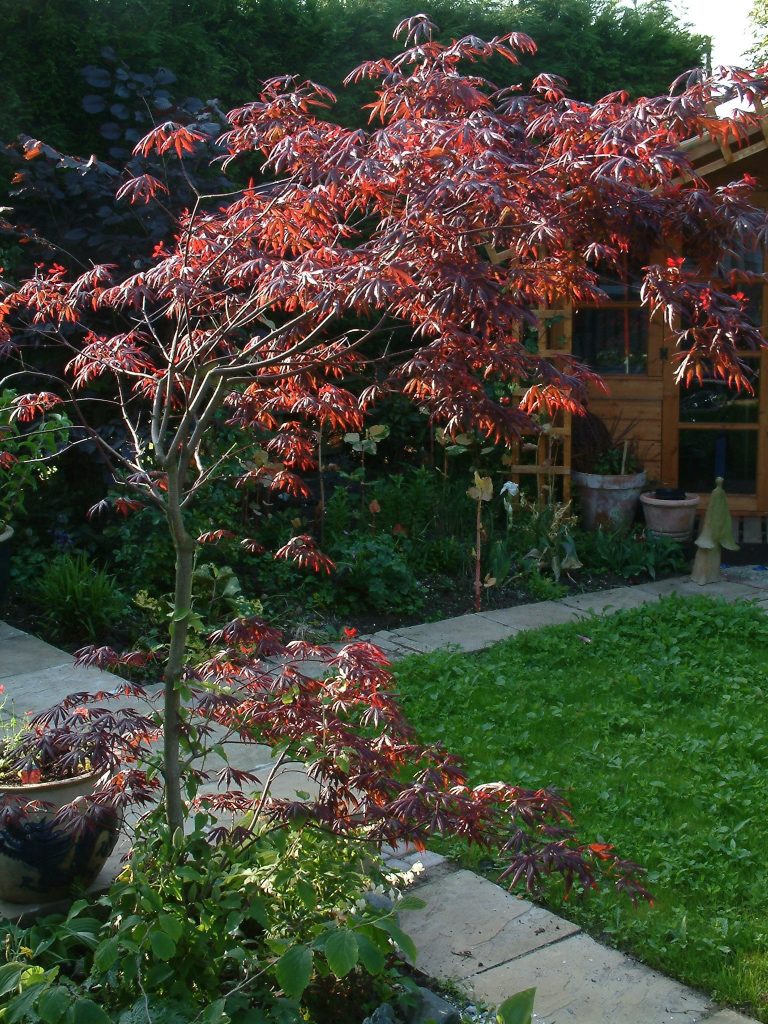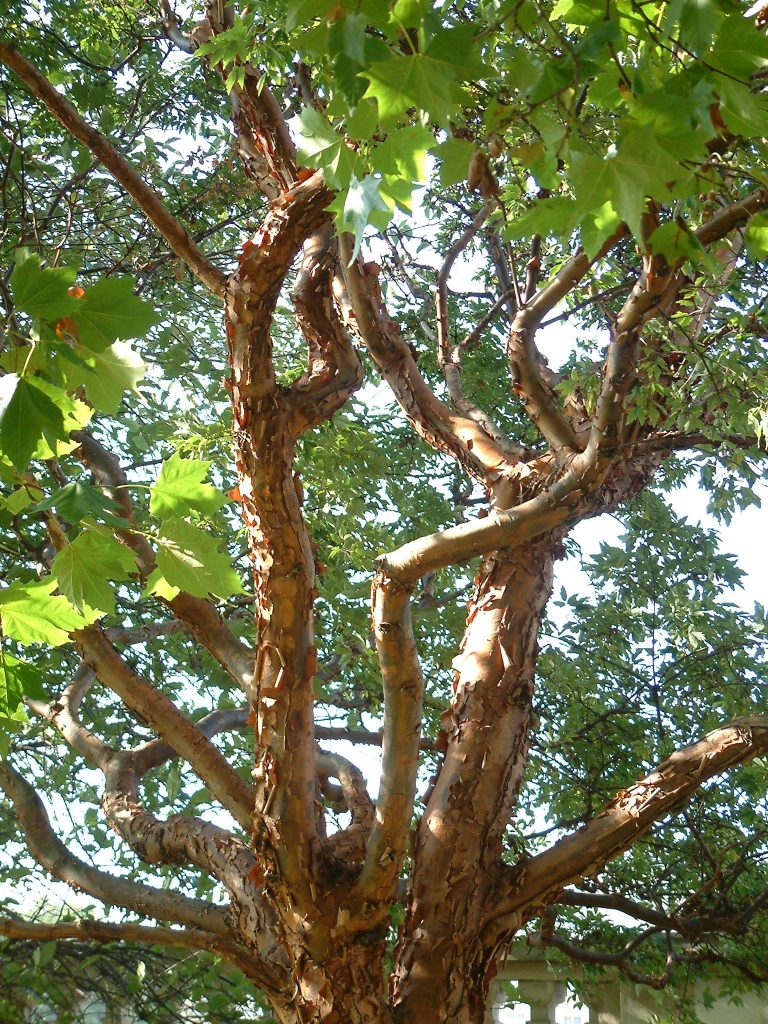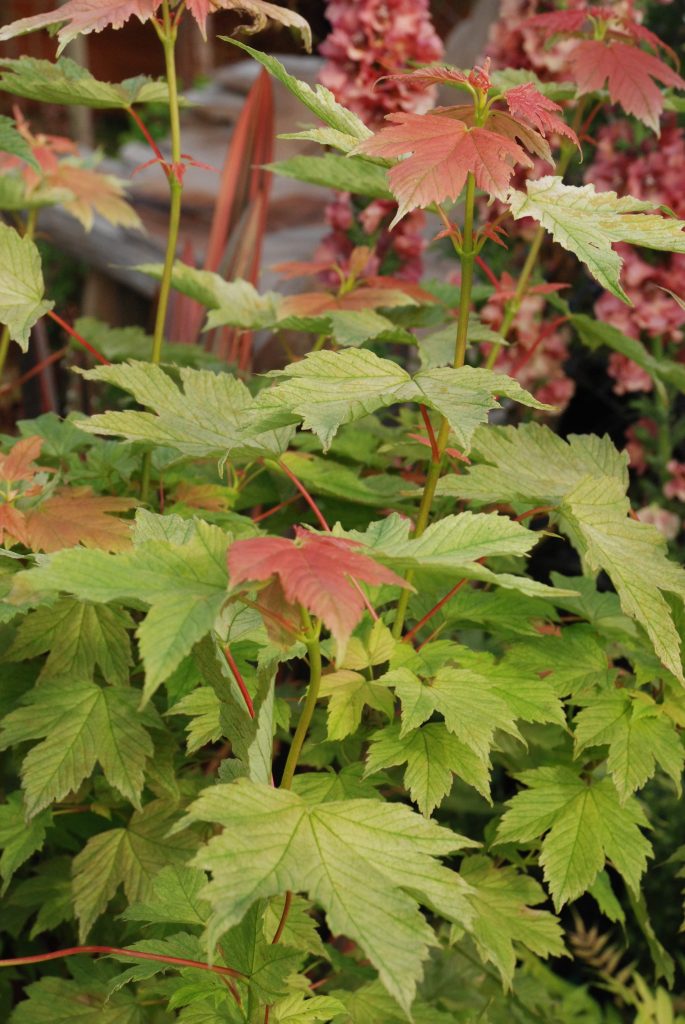We can forget the mists and mellow fruitfulness this year, gales are the order of the day. Most gardeners plant for autumn colour, dreaming of the fiery tints leaves will display at this time of year, nature has conspired against us this year with a series of gales that have prematurely ripped the leaves from trees and shrubs. Yet we soldier on and plan and plant for better times.

Most popular of all for autumn colour are the maples (acers). They vary from small to huge trees but most people think immediately of Japanese maples (Acer palmatum). They are most frequently grown as patio pot plants, and they can look very effective grown this way, but they are often put in inappropriate places and quickly fail.
To understand why, it is useful to consider what these plants need and why they so often get smaller rather than bigger, over the years.
These are plants that need an acid or neutral soil, constant moisture at the roots and protection from cold winds. Basically they need a sheltered spot, away from scorching sun and vicious winds. They usually thrive best under and around larger trees that give some protection from wind, strong sunlight and also from late spring frosts. A network of branches overhead protects the young, spring growth from frost. Though Japanese maples are completely hardy, if they come into growth and there is a late frost, it can blacken the new leaves. This is most commonly seen when plants are bought in April, the plants slightly ‘forced’ into leaf in poly tunnels and then this sensitive growth is burned by frost. It is most likely if the plants are bought in stores or supermarkets where they are kept unnaturally warm – a good reason to buy from a good garden centre – you know which one I mean!
Once in leaf, the foliage is at risk of tip burn, or worse, if the plant is in full sun or if it dries out, or if the site is windy.

Many years ago I bought a large acer and grew it in a pot for many years (above). The site was at the north of the house and it had sun for the morning. It was watered regularly and fed well and it thrived. I then decided to plant it in the border. It was not more than a metre from the spot on the patio but the soil was slightly alkaline and it was left to its own devices when it came to water. Over the next three years it got smaller and smaller until I felt it was time to bite the bullet and dig it out.
Key points for growing in pots
The finer the foliage, the more sensitive it will be to dead leaf tips. The more bold foliage, whether green or purple, is much easier to look after. They tend to be more vigorous too, though there are hundreds of varieties and there are always exceptions.
Small plants in 8cm (3in) pots need growing on for several years in an intermediate pot before planting into your large patio pot.
Always use a pot that has straight sides and is wider at the top than the bottom. After a few years you will need to repot it and that is impossible if you have used a pot with curved sides.
Use a loam-based compost. Use Lime-free John Innes compost or a mix of John Innes No 3 and ericaceous compost.
Place the plant in a partly shaded site. Never allow it to dry out. If it is on a hot, sunny patio, move it to somewhere shady in a heat wave.

Of course there are lots of other acers. Acer griseum is a superb small tree with attractive bark and glorious autumn colour. I planted one in my parents’ garden at the foot of the downs when I was at school and, despite it being thick clay on chalk it has made a magnificent tree. It is not by accident that it was among the first trees I planted in my new garden.
The toughest of all maples is the common sycamore. While most of us would not consider planting this in our gardens, the popular variety ‘Brilliantissimum’ has glorious, shrimp pink foliage in spring, almost as spectacular as its name suggests. It is slow growing and neat and, although it looks less good in summer when the foliage is a rather pale green, is a popular choice for small gardens.

Jobs for the week
When the gales die down, go round the garden and check tree ties and stakes. Cut back roses and fast-growing, late-flowering shrubs including buddleias and lavatera. This is not a proper prune but a light trim to reduce the length of stems so they are less likely to be damaged by further winter storms.
Plant spring-flowering bulbs, especially daffodils and hyacinths which should be in the ground as soon as possible.
Dig up and protect any tender plants. Frosts are predicted for later in the week so they are at risk of damage.
Dig up and store any potatoes left in the ground. Unless lifted and saved they are increasingly likely to be damaged by slugs.